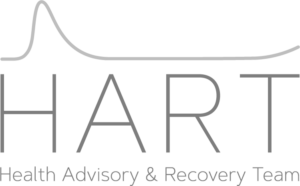
A World Health Organisation guide
At a time when concerns about serious adverse reactions to the Covid-19 vaccines are escalating, one might reasonably expect the World Health Organisation (WHO) – a specialised agency of the United Nations responsible for international public health – to take immediate and decisive action. Perhaps a recommendation to pause the vaccine rollout would be a reasonable step under the circumstances. Or maybe an urgent request to member states to rapidly undertake thorough investigations of the links between the mRNA vaccines and serious physical harms, such as myocarditis. But no, those responses have not been forthcoming. Instead, the WHO has published communication guidance on how to nullify criticism of the vaccines.
The document, titled Vaccine Crisis Communication Manual – a step-by-step guidance for national immunization programmes, was produced in 2022 by the WHO European office with the stated aim of supporting countries ‘in effectively responding to events which may erode the public’s trust in vaccines and authorities that deliver them’. The manual offers detailed recommendations about how those in authority should respond to a ‘vaccine crisis’ (defined as any occurrence that ‘will most likely or has already eroded public trust in vaccines … and may create uncertainty’). The explicit, overarching goal is to ‘rebuild trust in vaccines’.
The guidance is structured – with military precision – around four sequential phases:
1. Co-ordinate & engage
2. Design communication response
3. Monitor public opinion & the media
4. Inform the public
In keeping with the dominant narrative during the Covid era, the presumption is that vaccinations are always for the greater good. Repeatedly asserted throughout the document is that adverse events may not be causally linked to the jabs. Pre-prepared messages are recommended that ‘emphasize the value of immunization based on a risk-benefit analysis’. Somewhat sinisterly, public health officials are advised to ‘use existing or implement new monitoring tools to monitor public opinion’ and to maintain ‘good relations with key journalists and the media’. And when someone dies in the aftermath of vaccination, communicators are directed to say, ‘We are committing all available resources to the investigation of this unfortunate incident and are doing our utmost to find the cause as soon as possible’; (it is doubtful whether the vaccine-harmed population would concur with this claim). Clearly, the overarching goal of this WHO manuscript is to protect the pro-vaccine narrative under any circumstances.
The tone of this WHO document perpetuates the myth that anyone questioning the net benefits of the jabs is an ‘anti-vaxxer’ who is spreading misinformation. One illustrative example is the reference to an earlier – 2017 – WHO publication, titled ‘How to respond to vocal vaccine deniers in public’. Co-authored by Katrine Habersaat (who is also a co-author of the WHO, 2022, document) the article refers to these ‘vaccine deniers’ as people who have ‘a very negative attitude towards vaccination and are not open to a change of mind no matter the scientific evidence’. According to Habersaat, these agitators ‘censor opposing opinions’ and ‘use personal insults or even legal actions to silence representatives of the scientific consensus’. In light of the widespread vilification and censorship endured by those experts who have, over the last three years, challenged the dominant Covid narrative, the irony of these assertions is off the scale.
There was once a time when the primary aim of the WHO was the provision of accessible and holistic healthcare to all, regardless of socioeconomic status. The content of this Vaccine Crisis Communication Manual provides further evidence that this is no longer the case. The welfare of ordinary people is not the WHO’s priority; the appeasement of their pro-vaccine paymasters now takes precedence.

